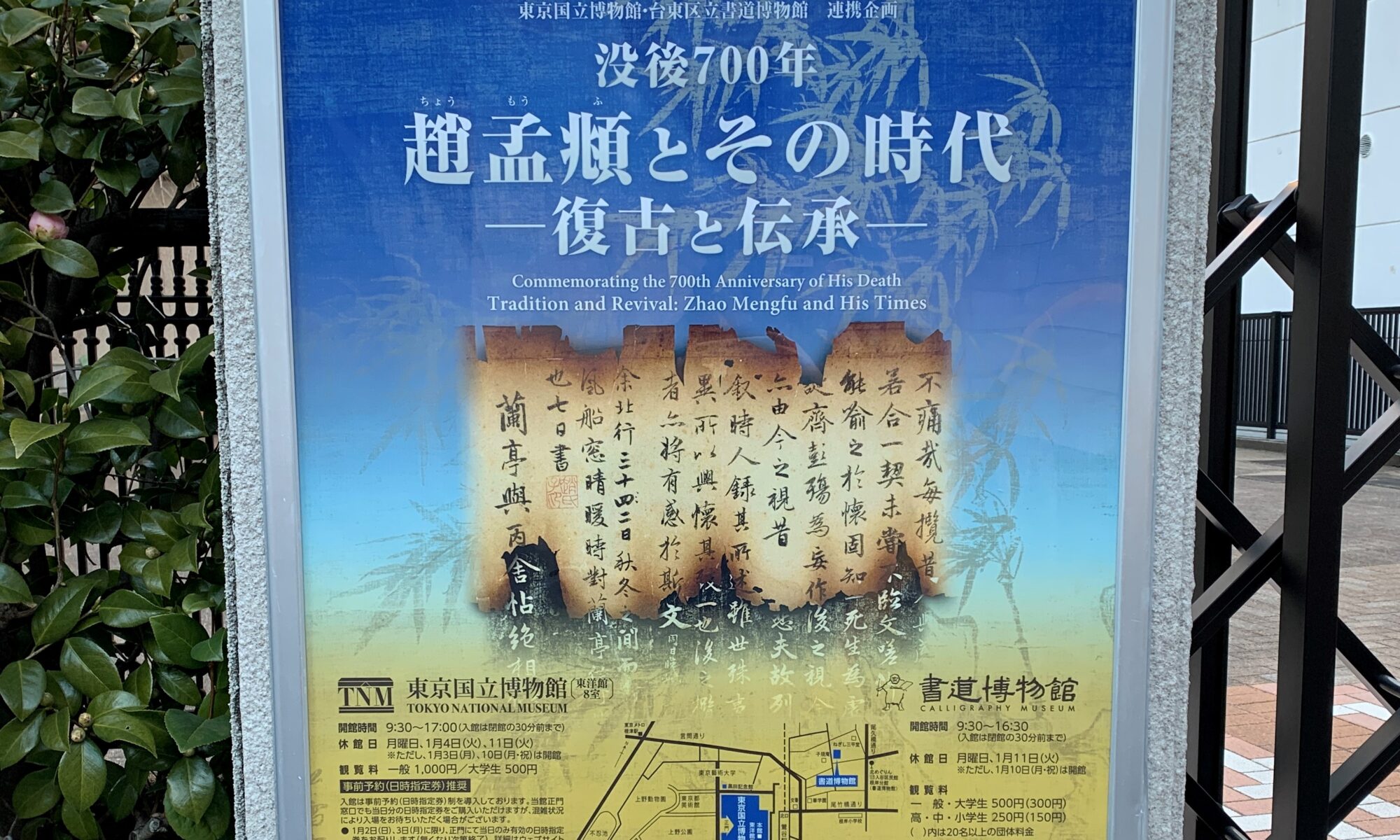Taito Ward Calligraphy Museum

While serving the Yuan dynasty dominated by the Mongolian people, he spent his life inheriting the traditional culture of the Han people and left a great deal of achievement in the history of Chinese calligraphy. Zhao Mengfu (1254-1322). To commemorate the 700th anniversary of his death, the Taito Ward Calligraphy Museum is holding a special exhibition “700 years after his death Zhao Mengfu and its era-reconstruction and folklore”.
Mr. Nobuhiro Nakamura, a senior researcher at the Calligraphy Museum, introduced us to this exhibition, so we would like to report on the state of the venue and the contents of the exhibition.
| Session: January 4th (Tuesday) -February 27th (Sunday), 2022 During the period, some works will be exhibited and scenes will be changed. First term: January 4th (Tuesday) to 30th (Sunday), second term: February 1st (Tuesday) to 27th (Sunday) |
* This is a collaborative project with the Tokyo National Museum .
* The photos shown are taken with special permission.
* The photo is dark overall due to the lighting in the exhibition room. note that.

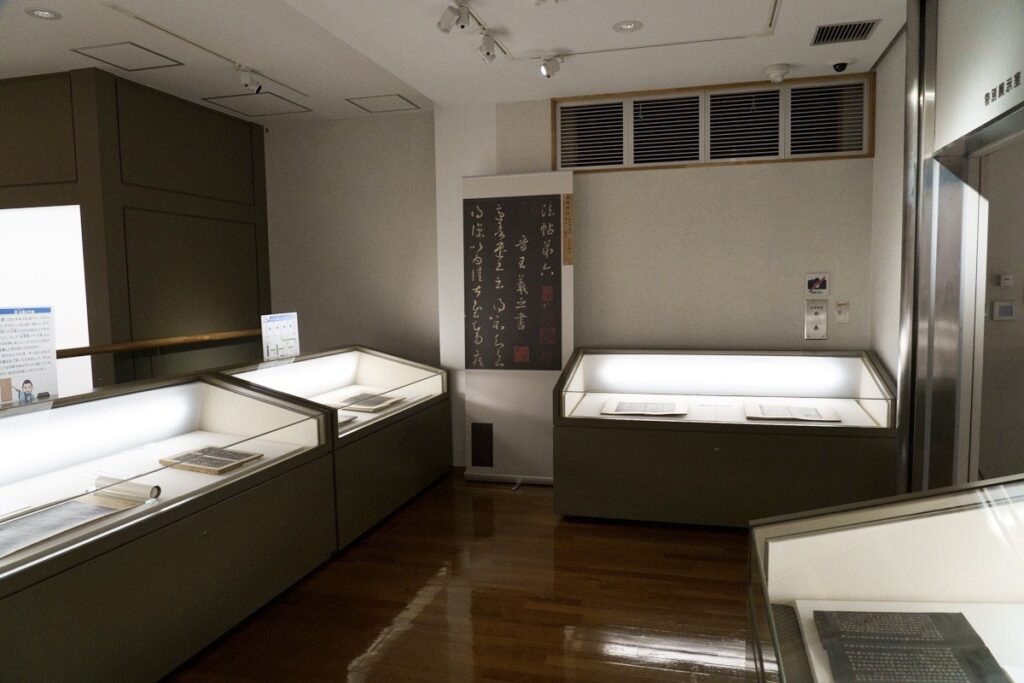
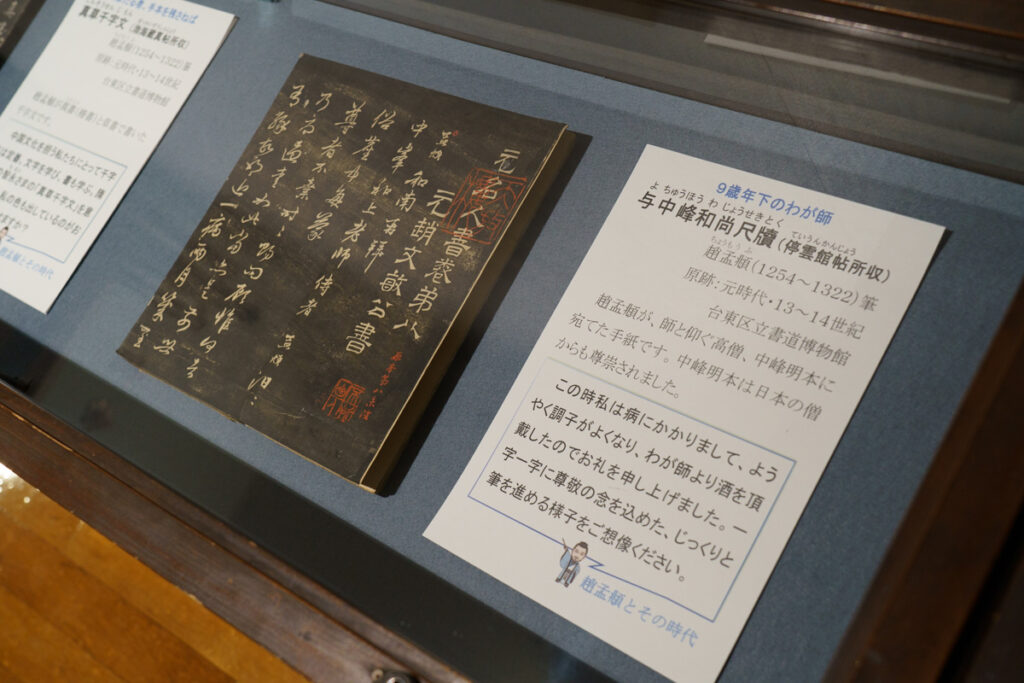
Zhao Mengfu, the folklore of Wang Xizhi’s calligraphy
Zhao Mengfu Was born at the end of the Southern Song Dynasty as the 11th descendant of Song’s great ancestor (the founder of the dynasty), and was an active literary person in the field of calligraphic works. At the age of 26, he was worried that his country would be destroyed, but at the age of 33 he was invited to the Yuan dynasty under the rule of the Mongolians and held important positions.
Even though he was from the Song dynasty, which is a Han Chinese dynasty, he was criticized at that time and in posterity for how unscrupulous it was to serve a foreign dynasty. However, Zhao Mengfu did not serve for the sake of career advancement and money. Will be described later Wang Xizhi It is believed that he chose to have power even if he was stigmatized, with his mission to protect and inherit the traditional culture of the Han Chinese, including the writing style of.
In this exhibition, about 50 items including related materials such as banknotes and seals that show how Zhao Mengfu, who has such a sense of mission, learned and wrote books and passed them on to posterity. Introduced in the work.
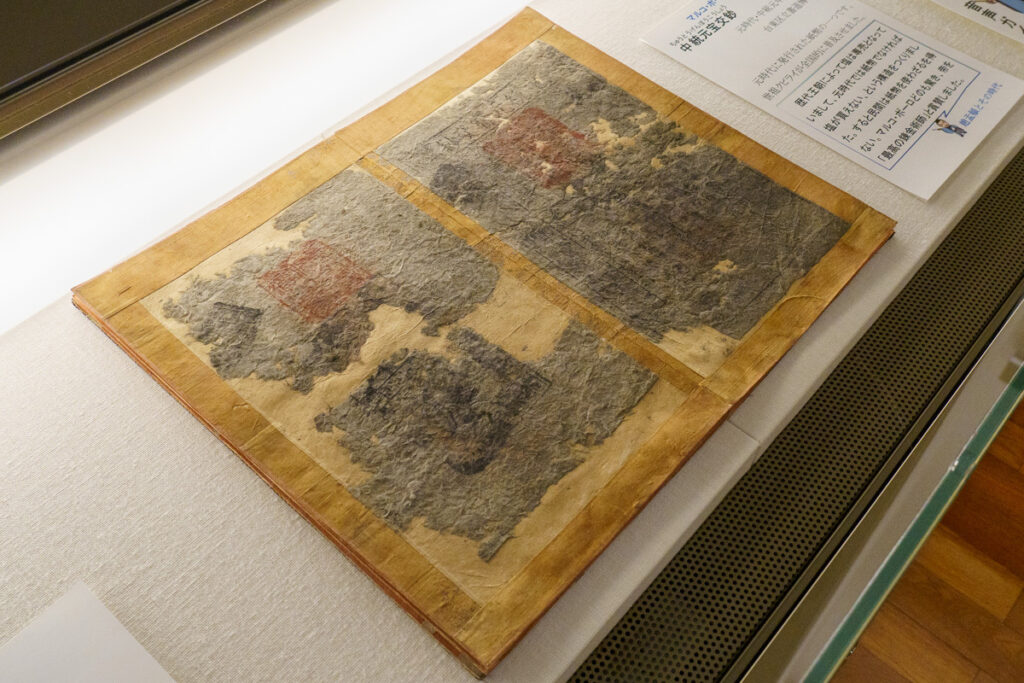
Before taking a closer look at Zhao Mengfu’s work, the Eastern Jin dynasty aristocrat, who was the first to be named as a well-learned calligrapher, he was devoted to. Wang Xizhi I would like to briefly introduce (303-361).
Wang Xizhi, who is called Shosei, the god of calligraphy, is the most famous person in the history of Chinese calligraphy, who raised the calligraphy to the realm of art by bringing emotional expressions into the world of calligraphy, which was all about practical use. The book has a plain and universal beauty and is still the highest norm of calligraphy to this day.
When Zhao Mengfu began working in the Yuan dynasty, Wang Xizhi’s presence diminished in the big city, and during the Tang Dynasty, when he was a reformist of calligraphy. Yan Zhenqing It is said that (709-785) was worshiped. Zhao Mengfu learned the writing style of Wang Xizhi, who has the same roots, and advocated a retrospective principle, in order not to turn off the lights of the Han Chinese culture, especially the culture of southern China, which is his roots. The style that returned to the origin of the classical writing method and shape derived from Wang Xizhi seems to have changed the flow of calligraphy since the Song dynasty.
Wang Xizhi does not have an existing handwriting, and can only trace his handwriting from his autographs and rubbing books. In other words, Zhao Mengfu, who is essentially the successor to Wang Xizhi, is an indispensable presence in approaching Wang Xizhi, and vice versa.
Naturally, many books by Wang Xizhi are introduced in this exhibition dealing with Zhao Mengfu.
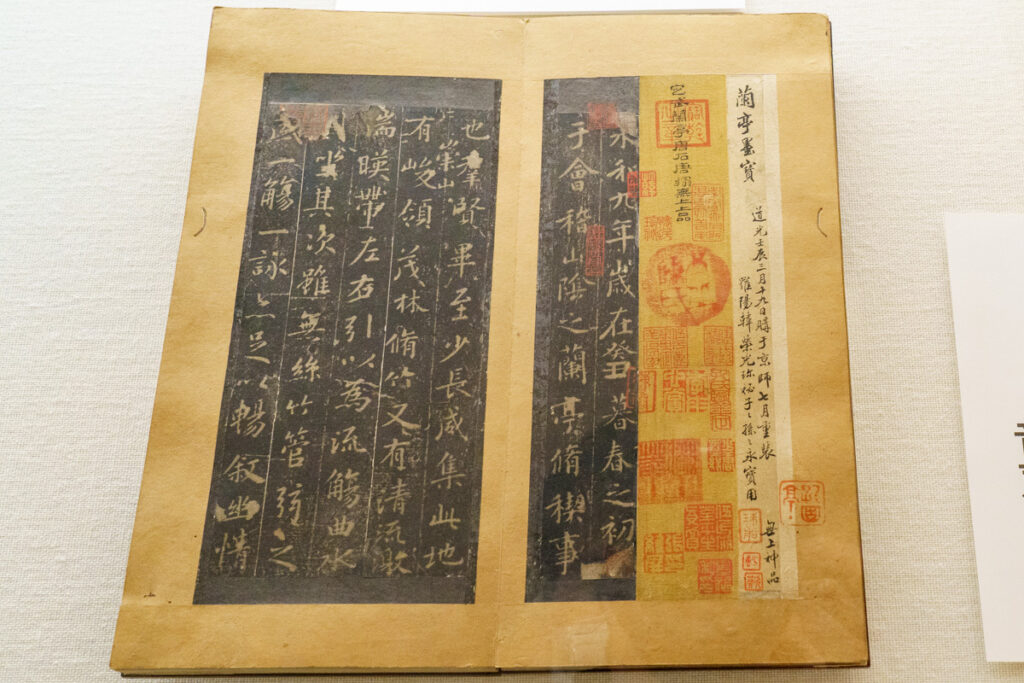
Sadatake Lantingji Xu — — Hanju Ship Book -Wang Xizhi Original Site: Exhibited only in the Eastern Jin Dynasty and the first half of the 4th century
The photo above is the famous masterpiece of Wang Xizhi’s book, “ Lantingji Xu Of the many reproductions of Sadatake What is called a book. Mr. Nakamura says about this work, “There is a certain strength in the quiet atmosphere by removing unnecessary meat. It is a character that the aristocrats at that time are likely to write with elegant writing.”
Other “Lantingji Xu” have flashy brush strokes, but it was evaluated that Sadatakemoto was the quietest and approaching the essence of Wang Xizhi, and Zhao Mengfu also respected Sadatakemoto in particular. Yes.

This is”絳 帖 It is a book of Wang Xizhi recorded in the copybook (model book), but it is said that it was actually owned by Zhao Mengfu 700 years ago. The proof is marked with “Matsuyuki”, which is the issue of Zhao Mengfu, so it may be fun to look for it when you see the real thing.
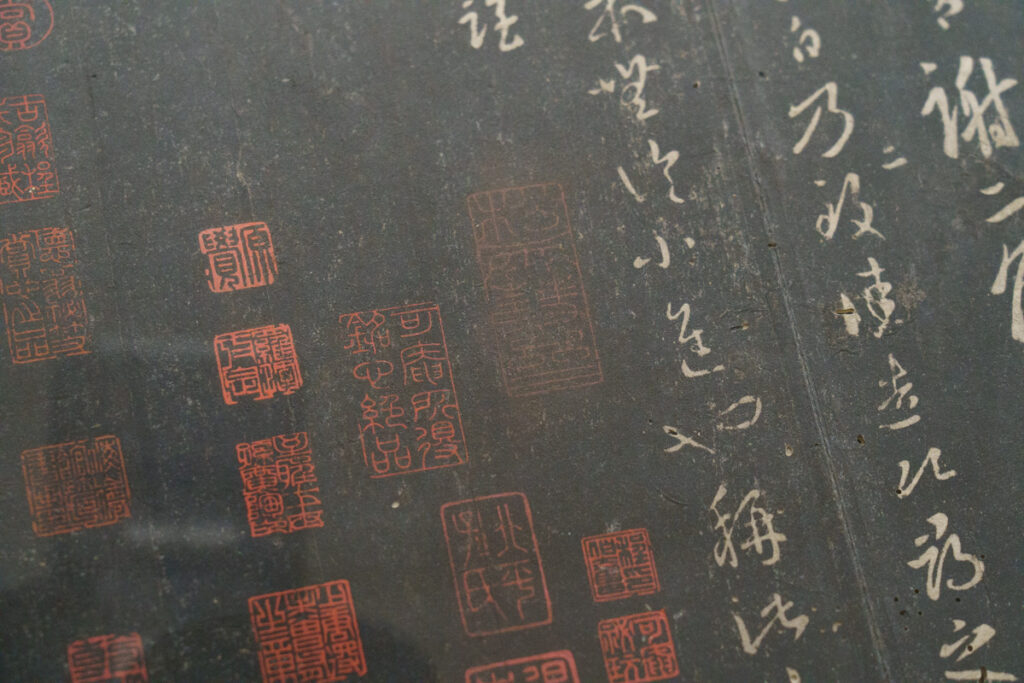
It’s a little off the subject, but it’s very bold from the modern Japanese sense to feel free to stamp the possession stamp not only for this work but also for valuable works. Write down your history and impressions “ Epilogue “Sentence” was also left in the empty space of various books, which made me feel strange.
Although it was not posted, Wang Xizhi wrote the Taoist scripture, which was also owned by Zhao Mengfu, in a small regular script. Yellow garden sutra The copybook of “” is also a must-see. The harmonious and elegant character that can be understood at a glance why Wang Xizhi is treated as a calligraphy was enough to be seen even if it was not a handwriting.
No matter where you look, there are only beautiful characters! Enjoy the world of Zhao Mengfu
Now, from here, I will introduce the work of Zhao Mengfu, who is the main subject.
“It’s a must-see for anyone who wants to learn a book for the first time, or who is thinking about what to learn, because there are only beautiful characters no matter how you look at it,” says Mr. Nakamura. It was.
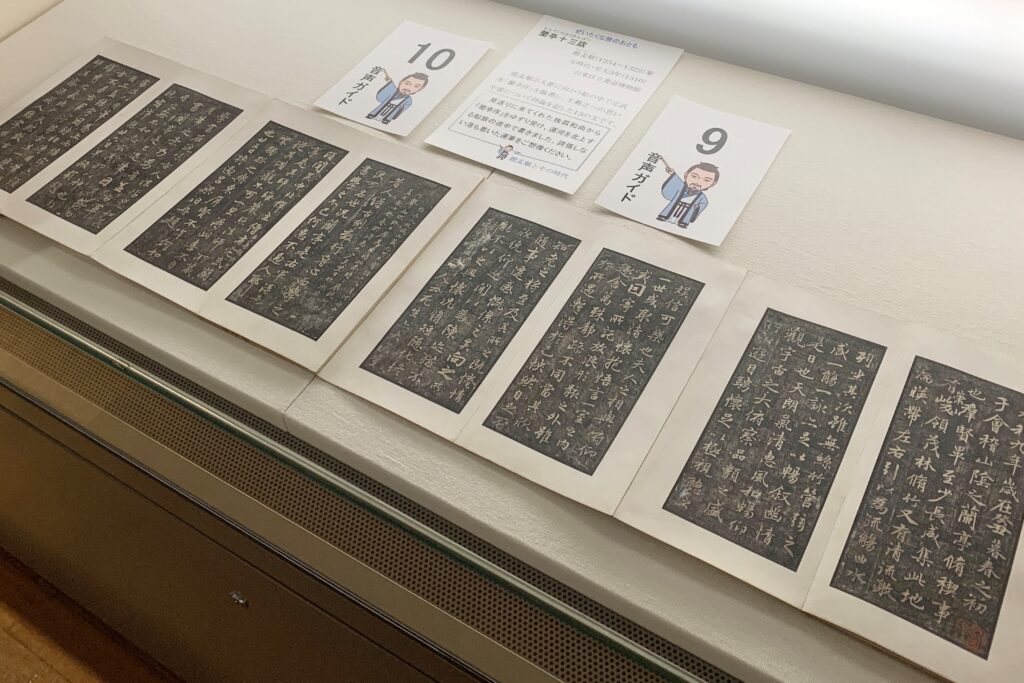
Zhao Mengfu acknowledged his feelings about “Lantingji Xu” and Wang Xizhi of Sadatakemoto introduced earlier. Rantei 13 scarlet Is one of the highlights of this exhibition. Mr. Nakamura described the charm of this work as “The first four pages on display are Zhao Mengfu’s writings of” Lantingji Xu “, and the second four pages are Zhao Mengfu’s swordsman. You can see how Zhao Mengfu aimed for Wang Xizhi’s writing style and was thin. ”

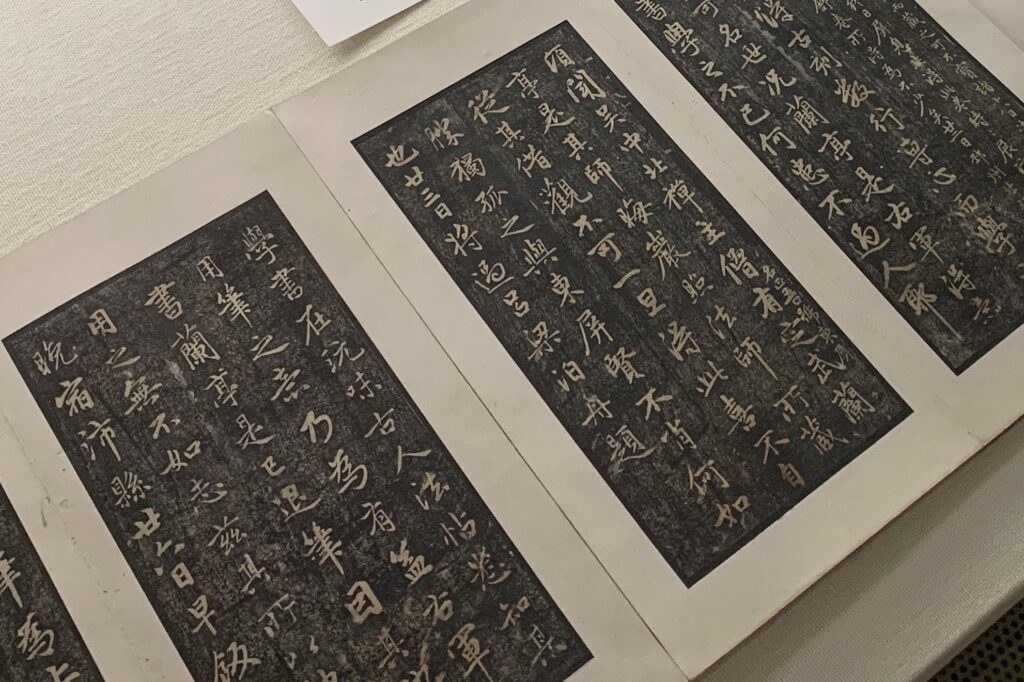
Indeed, until I was told, I was unaware that the writings and scarlet texts were written. I feel that characters with many strokes have a similar shape and atmosphere.
Wang Xizhi said, “Of the many” Lantingji Xu “, Sadatakemoto is the best. The shape of the characters changes with the times, but the brushstrokes do not change even a thousand years ago. From the book, Yuhide’s spirit (excellent taste) naturally comes out. It should be a teacher’s method. ” You can feel the deep respect for Wang Xizhi.
Although it has been partially burned down, the handwriting of this work can be seen in the exhibition at the Tokyo National Museum.
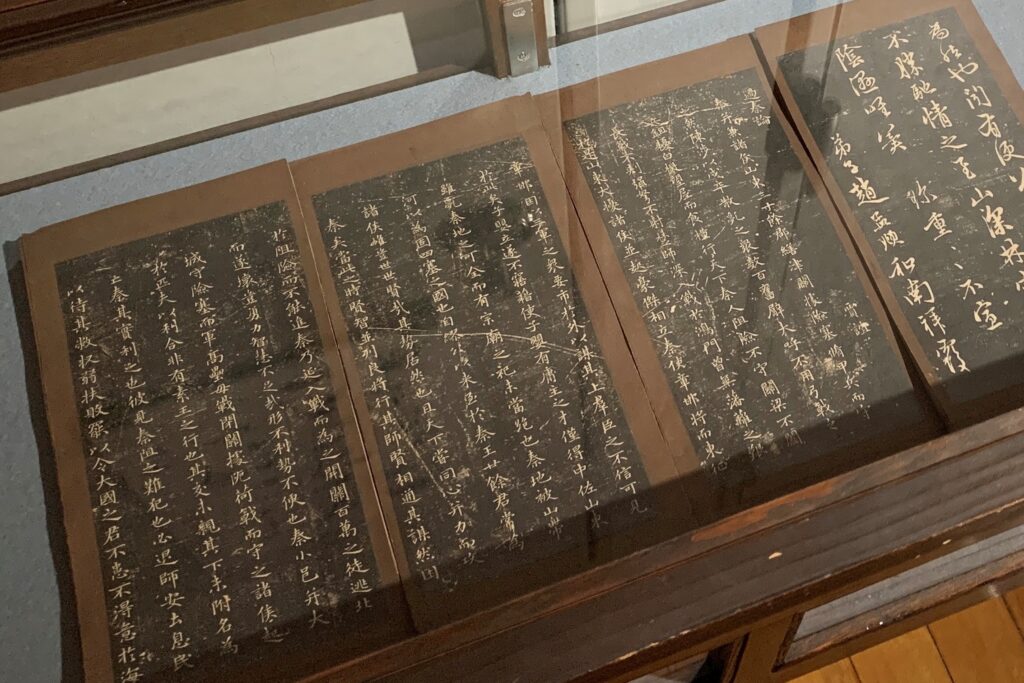
“ Ten Crimes of Qin “or” Regular script Han Ji An From the work written neatly and neatly, Zhao Mengfu’s extraordinary discipline can be seen. People are just overwhelmed by how well they can write such well-organized characters.
Looking at Zhao Mengfu’s small sword, I think that he has a solid correct form of letters, and that he can output it accurately without any deviation. How much study did you have to reach that level? According to Mr. Nakamura, Zhao Mengfu wrote 10,000 characters (!) A day, which is why.
By the way, Zhao Mengfu’s regular script was popular in the Qing dynasty, and in the Imperial Examination (high difficulty bureaucratic appointment test), when making an answer with Zhao Mengfu’s regular script, the score was sometimes positive. It was a convincing beauty to be treated that way.
Although it was not posted, especially the handwritten “Regular Script” is a fine brush that can not be expressed in Takumoto, and you can see the writing style like a razor, and you can not breathe. I will forget my breath when I carry it.
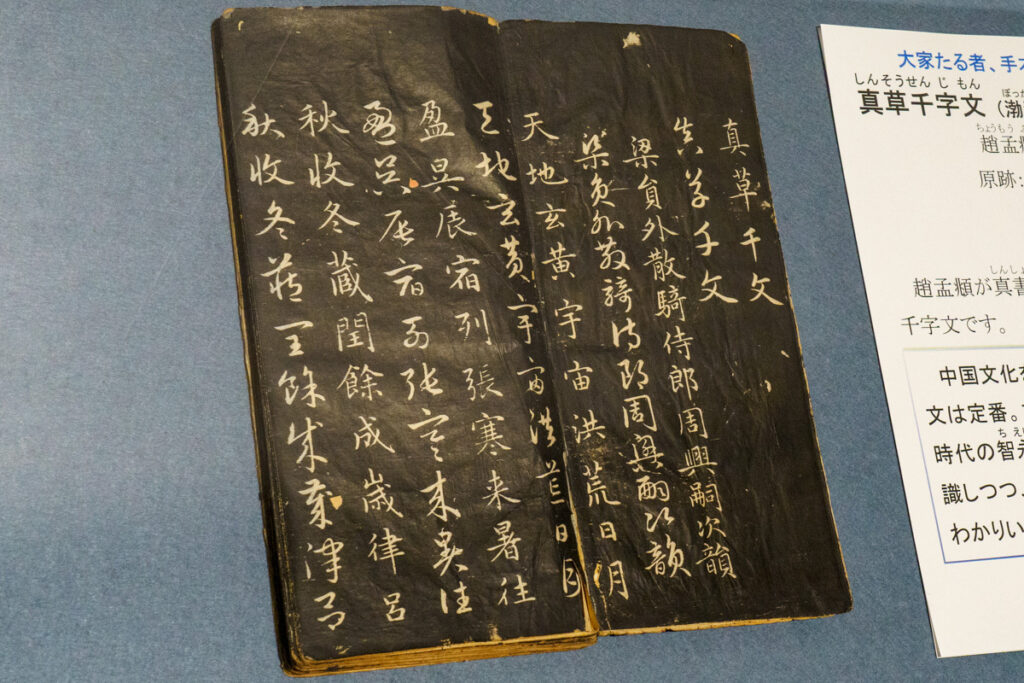
This is” Thousand characters This is a 1000-character long poem consisting of 250 four-character phrases that was used as a model when teaching Chinese characters to children. It is written side by side with a regular script and a cursive script, and Zhao Mengfu also learned with “Senjibun” and left “Senjibun” as a duty of the landlord. Even the author, who is not familiar with cursive script, can feel the elegance of each stroke of this cursive script.
By the way, as a master of calligraphy, I imagined that before the appreciation, there was a characteristic of the characters that could clearly say “This is Zhao Mengfu!”. However, when I appreciate it, it seems that the beauty that is well-proportioned is wonderful because it follows Wang Xizhi, but there are not many other features …?
Is it just beautiful? Mr. Nakamura taught the author, who is not sure about the “likeness” of Zhao Mengfu’s landlord, as follows.
“It’s true that Zhao Mengfu’s book is beautiful. It’s beautiful for everyone, so it’s easy for beginners to enter, but it’s not a big deal, and it’s easy for anyone to write it. You can see that it is the beauty calculated for the first time. If the strokes shift even a little, the collapse starts at once, which may be said to be a feature. “
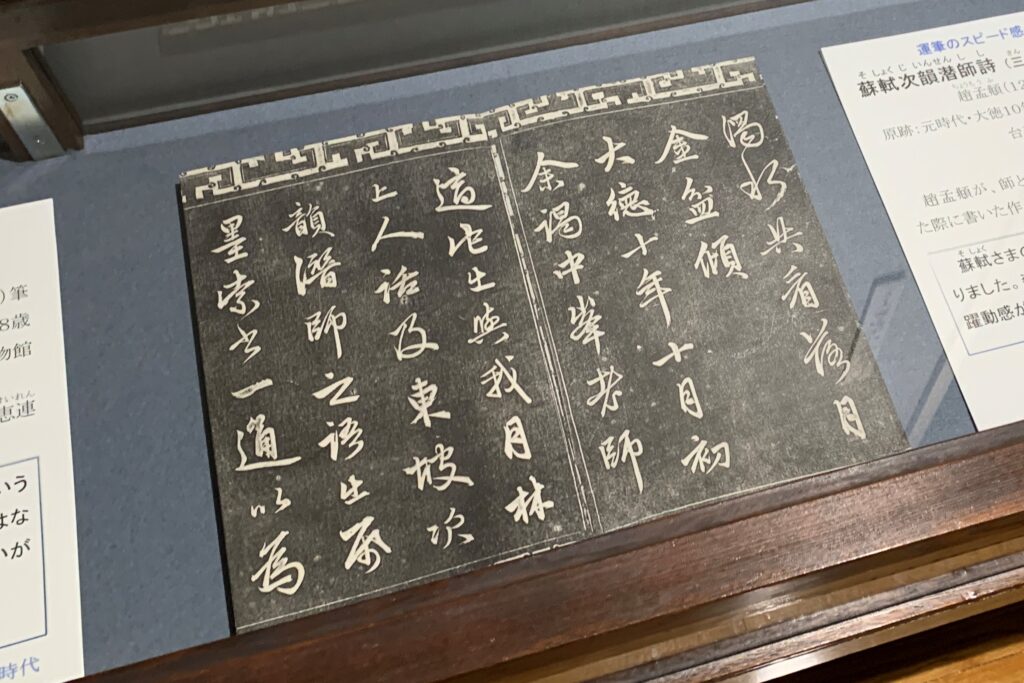
After listening to that story, I watched it again. Su Shiji Rhythm Poem “. Zhao Mengfu looks up to be a teacher Akimoto Nakamine This is the work I wrote when I visited. It is a mixture of regular script, semi-cursive script, cursive script and typeface, and it is improvised and written quickly, but I am surprised that the overall balance is outstanding.
It is strange to get an uneven impression when looking at a part of the characters, such as thick and thin lines and large and small shapes. Is this also part of the “calculated beauty”?
“It’s important that the whole thing is organized. Even if the characters look disjointed at first glance, they can be put together without any discomfort. Excellent technology is required, but the landlord can do that,” says Nakamura.
So that’s it……! I finally understood how amazing it was. Please pay attention to this point and go around the exhibition.
In addition, there was an exhibition that conveys the popularity of Zhao Mengfu in Japan, such as a masterpiece that was handed down to the Mito Domain during the Edo period, and a work that was copied by Zhao Mengfu’s “Hakurakuzu”, which was also an excellent painter, by the Kano school Kano Nakanobu.
The book of Zhao Mengfu’s younger brother, who is extremely valuable!
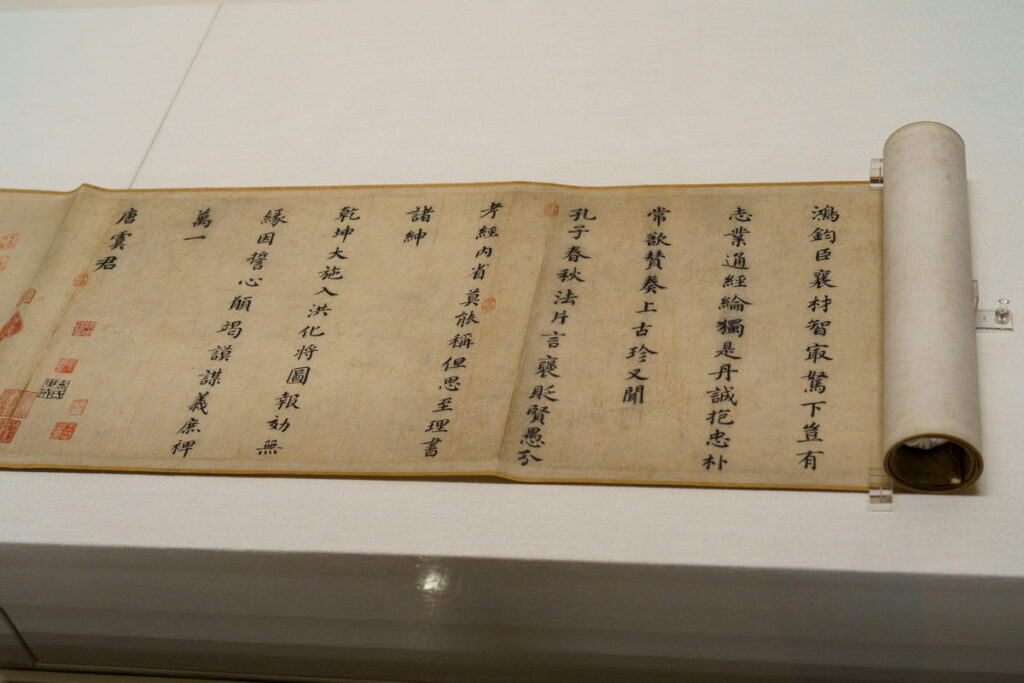
There are also interesting exhibits that show the timeliness. A bureaucrat of the Northern Song Dynasty Cai Xiang Dedicated to the emperor Regular script Thank you book Poetry table volume “is. The highlights are the way the space is taken and the neat character appearance, but the focus is on one of the four Song dynasties. Mi Fu The scarlet sentence added by. Mi Fu has only seen this book in a rubbing book for many years, and 40 years later, he finally saw his autograph, so he wrote a scarlet sentence as a memorial.
Even the landlord of the book that served the emperor has been around for 40 years. You can see how valuable the chance to meet a celebrity’s autograph at that time was. The regular script says “40 years” as it is, so it’s easy to find, so please take a look at the book filled with myriad feelings.

In addition, multiple people wrote a scarlet sentence in this work, and among them, Zhao Mengfu’s best friend, Xian Yushu And younger brother Zhao Mengfu Also the character of. Zhao Mengfu’s characters are very rare, so don’t miss it.
I was worried that people who couldn’t read the written content would enjoy it because the book wasn’t bright, but I was completely fascinated by the fact that I could watch it for hours.
This interview is done at the timing when the first half exhibition can be appreciated, and it seems that the face of the work will change considerably in the second half exhibition starting from February 1 (Tuesday). In the second half, the number of exhibitors has increased by several points, so it seems to be even more enjoyable. Please see the list on this page for detailed exhibits.
By the way, the author also visited the exhibition at the Tokyo National Museum, which is a collaborative project. Compared to the exhibition of Zhao Mengfu, a calligraphy museum that focuses on individuals, the Tokyo National Museum has contents that allow you to enjoy books and paintings that give you a bird’s-eye view of the atmosphere of the entire era. Please watch it together.

■ Outline of the special exhibition “700 years after his death Zhao Mengfu and its era-reconstruction and folklore-“
| Legislative session | January 4th (Tuesday) -February 27th (Sunday), 2022 |
| venue | Taito Ward Calligraphy Museum |
| Opening hours | 9:30 am to 4:30 pm (admission is until 4 pm) |
| closing day | Monday (the next weekday if it overlaps with a holiday), special arrangement period, etc. |
| Admission fee | General 500 yen (300 yen) Small, middle and high school students 250 yen (150 yen) * Please check the official website for details. |
| Exhibition official page | https://www.taitocity.net/zaidan/shodou/oshirase/news/2113/ |


